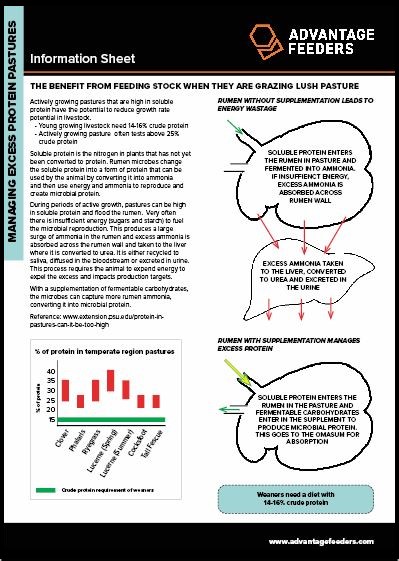Most pasture types are very high in protein when they are in their elongation phase and used to grow young and finish young stock. Depending on the age of weaned cattle, they require 12-16% protein in their diet while pastures can often be between 25-35%. Weaners must transform the excess protein in their rumen and excrete it out through their urine, also known as “the protein cost”. It is estimated that if requires 1MJ for every extra % of protein to excrete. Supplementing high quality pasture with starch manages the excess protein in the rumen so your stock grows much faster and you produce more kg per unit of grass.
Our information sheet (right), provides a brief overview and explains:
- How pasture is limiting production
- The latest science about how to rectify pasture issues
- Quantifying potential gains from complementary feeding
Farming operations are complex. The following pros and cons have not been factored into this calculator:
- It is common for feeders used in this calculator to be used for other purposes at different times of the year. This reduces the depreciation expense and increases the return on investment.
- Supplementing pasture can slow the speed of passage and increase the utilisation. This leads to more production from a given amount of pasture.
- Higher growth rates achieved during this time will lead to higher weights at joining and increase the conception rate of heifers.

